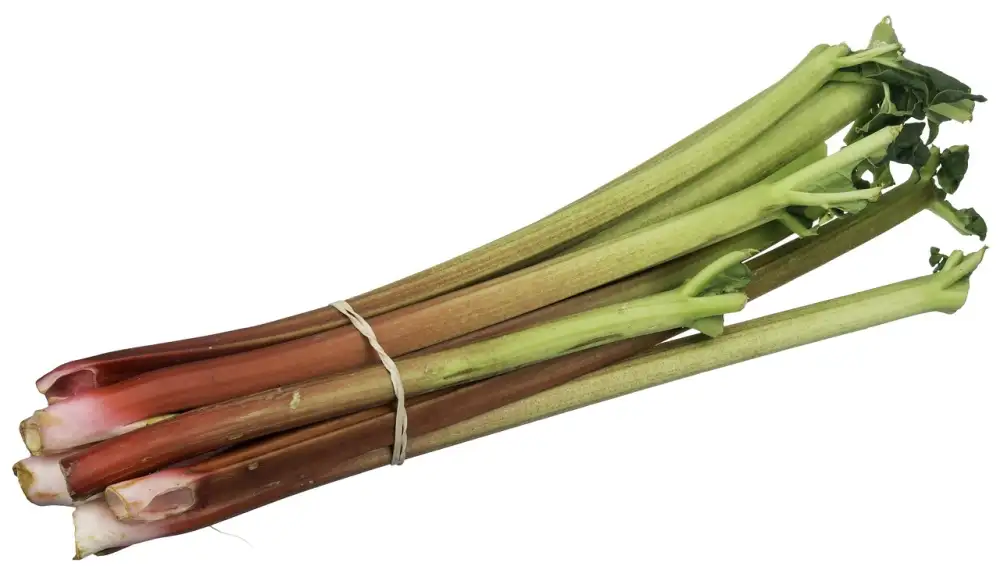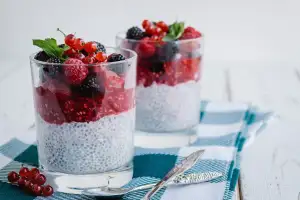Revolutionize Your Palate with Roasted Rhubarb: A Delicious Twist on a Classic Ingredient

Rhubarb, a vibrant pink vegetable often mistaken for a fruit, is a versatile ingredient that can be used in both sweet and savory dishes. Roasting rhubarb enhances its natural tartness while adding a subtle sweetness and depth of flavor. This cooking method transforms the firm stalks into tender, caramelized delights that can elevate any dish they are added to. Whether you're a seasoned chef or an amateur cook, roasted rhubarb is sure to revolutionize your palate and inspire culinary creativity.
Benefits of Roasting Rhubarb
Roasting rhubarb offers numerous benefits that enhance both its flavor and nutritional profile. The cooking process helps to caramelize the natural sugars in the rhubarb, resulting in a sweeter taste compared to raw rhubarb. Additionally, roasting softens the fibrous texture of rhubarb, making it more palatable and easier to digest. This method also helps retain more nutrients than boiling or stewing, as the rhubarb cooks quickly at high heat, preserving vitamins and minerals such as vitamin K, vitamin C, and calcium.
How to Roast Rhubarb
To roast rhubarb, start by preheating the oven to 375°F (190°C). Wash the rhubarb stalks thoroughly and trim off the ends. Cut the rhubarb into 1-inch pieces and place them in a baking dish. Sprinkle with sugar to taste, usually about 1/4 to 1/2 cup depending on sweetness preference. Add a splash of water or orange juice to help create a syrup as it roasts.
Cover the baking dish with aluminum foil and roast in the preheated oven for about 15-20 minutes until the rhubarb is tender but still holds its shape. Remove the foil and roast for an additional 5-10 minutes to caramelize slightly.
Once done, let the roasted rhubarb cool slightly before serving. The result should be soft, tangy rhubarb with a hint of sweetness that can be enjoyed on its own or used in various dishes for a unique flavor profile.
Serving Suggestions for Roasted Rhubarb
1. **As a Topping**: Roasted rhubarb is a versatile topping that can elevate various dishes. Sprinkle it over yogurt, oatmeal, or ice cream for a sweet and tangy twist.
2. **In Baked Goods**: Incorporate roasted rhubarb into your favorite baked goods like muffins, cakes, or tarts. Its unique flavor adds depth and complexity to traditional recipes.
3. **With Cheese**: Pair roasted rhubarb with soft cheeses like goat cheese or brie for a sophisticated appetizer or dessert. The contrast of flavors creates a delightful culinary experience.
4. **On Toast**: Spread cream cheese or ricotta on toast and top it with roasted rhubarb for a delicious breakfast or snack option. The combination of creamy and tangy flavors is sure to impress.
5. **In Salads**: Add a pop of color and flavor to salads by including roasted rhubarb in your greens. It pairs well with bitter greens like arugula or spinach, along with nuts and cheese for added texture.
6. **As a Sauce**: Blend roasted rhubarb with some honey or maple syrup to create a flavorful sauce for meats like pork or chicken. The acidity of the rhubarb cuts through the richness of the meat perfectly.
By exploring these serving suggestions, you can discover new ways to enjoy the unique taste of roasted rhubarb in your culinary creations.
Variations and Flavor Combinations
Roasted rhubarb is incredibly versatile and pairs well with a variety of flavors to create unique culinary experiences. For a sweet twist, try combining roasted rhubarb with honey, vanilla, or cinnamon. The natural tartness of rhubarb also complements savory dishes when paired with ingredients like balsamic vinegar, ginger, or rosemary. For a refreshing summer treat, mix roasted rhubarb with fresh mint or citrus zest. Experimenting with different herbs and spices can elevate the flavor profile of roasted rhubarb and open up a world of possibilities for your palate.
In conclusion, roasted rhubarb is a versatile and delicious ingredient that can add a unique twist to your culinary creations. Its tangy yet sweet flavor profile makes it a perfect addition to both sweet and savory dishes. Roasting rhubarb enhances its natural flavors and brings out its sweetness while maintaining a slight tartness.
To make the most of roasted rhubarb, remember to choose fresh, firm stalks and avoid using the leaves as they are toxic. Experiment with different spices and sweeteners to create diverse flavor combinations that suit your taste preferences. Don't be afraid to pair roasted rhubarb with ingredients like vanilla, ginger, honey, or citrus fruits for a delightful burst of flavors.
Whether you enjoy it on its own as a topping for yogurt or oatmeal, mixed into salads, or served alongside roasted meats, roasted rhubarb is sure to revolutionize your palate. So next time you come across this vibrant pink vegetable at the market, don't hesitate to bring some home and start roasting!
Published: 30. 03. 2024
Category: Food



